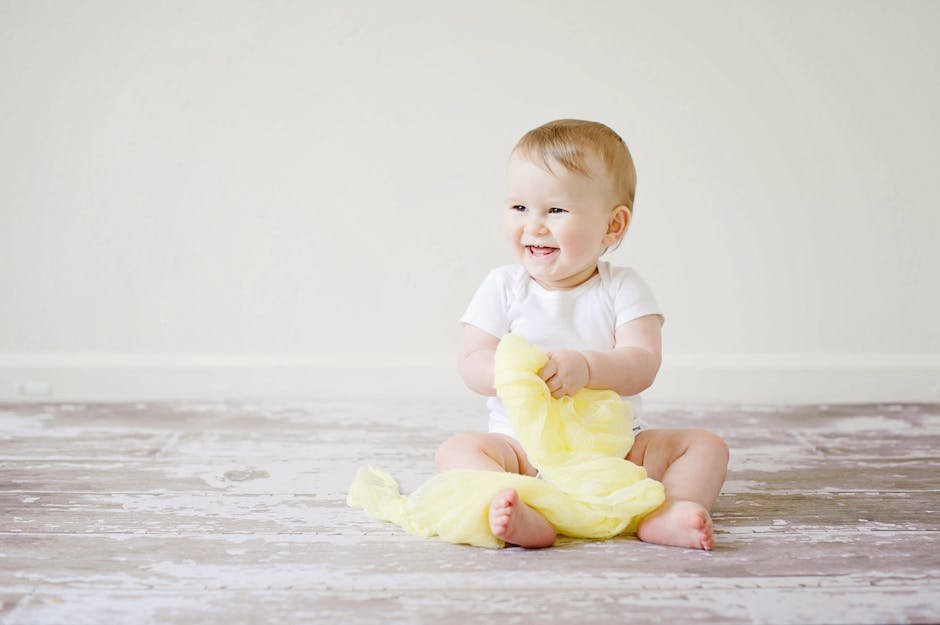
Ensuring the safety and well-being of autistic children is a critical priority for parents, educators, and caregivers alike. Autistic individuals may experience the world differently, and this can sometimes create unique challenges when it comes to safety. In this exploration, we delve into the vital task of creating a safe environment tailored to the needs of autistic children—a space where they can thrive without the lurking dangers of the average unadapted setting. By securing furniture, curating the accessibility of objects, and implementing strategic safeguards, we aim to carve out a sanctuary of security. Beyond physical safety measures, the nuance of communicating safety protocols and emergency procedures to children with autism requires careful consideration and adaptation. These are the integral building blocks that lay the foundation for imparting essential personal safety skills, a cornerstone in fostering both independence and protection for these young individuals.
Creating a Safe Environment
Creating a Secure and Comforting Environment for an Autistic Child
Navigating the waters of parenting is akin to steering a ship through both tranquil seas and unexpected storms. When a child is on the autism spectrum, the journey calls for a special map—one that leads to a world where the waters are calmer and more predictable. The key to crafting a secure and comforting environment for an autistic child lies in understanding their unique needs and creating a space where they can thrive. Here’s how to set sail toward serenity for your special little one.
Embrace Structure and Routine:
Autistic children often find a great sense of relief in the familiar. Establishing a consistent daily routine can be their anchor. Knowing what to expect from the time they wake until the moments before bedtime helps reduce anxiety and provides a framework they can count on. Visual schedules are not only practical, they’re also reassuring, offering a clear roadmap for the day’s activities.
Design Spaces with Sensitivity:
Every room in your home should be a sanctuary, and this is even more crucial for autistic children. Consider the sensory experiences that might be overwhelming to them. Soft lighting, muted colors, and minimal clutter can be soothing to sensitive eyes and minds. Noise-cancelling headphones in louder areas and cozy corners for retreating when the world becomes too much can make your home a true haven.
Incorporate Their Interests:
Create areas in your home where your child can engage in their favorite activities. Whether it’s a nook for sorting, a space for spinning, or a shelf for an array of textured fabrics, these personalized spots show your child their passions are valued and reinforces their sense of belonging.
Clear Communication is Key:
When discussing plans or changes to the routine with your child, clarity is essential. Use simple, direct language they can understand, and wherever possible, employ visuals or gestures to accompany your words. This reduces the chance of misunderstandings and helps them feel more in control of their situation.
Set Up for Sensory Success:
Many autistic children have distinct sensory preferences or aversions. Dedicate a drawer or a bin to sensory tools like stress balls, fidget spinners, weighted blankets, or other items that help them regulate their emotions and reactions. Having these tools readily accessible empowers them to self-soothe and manage sensory overload independently.
Encourage Independence Within Limits:
Creating an environment where your child can exercise some level of independence not only boosts their confidence but also teaches vital life skills. Clear, labeled bins for toys and clothes help them maintain order on their own. Safety is, of course, paramount, so be sure childproof locks and gates are in place to keep them safe as they explore their autonomy.
Harness the Power of Positive Reinforcement:
Positive reinforcement goes a long way in promoting good behavior and creating a loving atmosphere. Praise specific actions and reward accomplishments with meaningful gestures that resonate with your child. The boost in self-esteem is incalculable and reinforces a positive cycle of behavior and achievement.
Consistency Across Caregivers:
Ensure everyone involved in your child’s care is on the same page. Uniformity in rules, expectations, and responses provides a safety net of predictability that extends beyond the home. When the approach is consistent, the world feels more manageable and secure to your child.
A Listening Ear and an Open Heart:
Lastly, always lend an empathetic ear to your child’s communication, both verbal and non-verbal. Validate their feelings and experiences. By showing that you respect their point of view, you create an environment of mutual trust and understanding—a place where they know they are cherished, just as they are.
By crafting an environment attuned to an autistic child’s needs, you lay the groundwork for growth, happiness, and a lifetime of discovery. It’s not about creating a perfect space, but rather a loving place where they feel secure, supported, and free to be their wonderful self.

Communication and Emergency Planning
Crafting Safety: Communication Tips for Autistic Children
As devoted nurturers, understanding the unique ways in which autistic children perceive and interact with the world is key to teaching them about safety effectively. By tailoring our approach to meet their specific needs, we can provide them with the knowledge and skills to navigate their environment thoughtfully and cautiously.
Use Visual Aids and Social Stories
Visual aids are a fantastic tool for explaining safety to an autistic child. Children on the spectrum often process visual information more effectively than verbal explanations. Try using picture charts or illustrated sequences that depict the safety procedure you want to teach. Social stories that outline potential situations and appropriate responses are also beneficial. These personalized and predictable guides can help make abstract safety concepts more concrete and understandable.
Employ Simple, Literal Language
When discussing safety, it’s crucial to use simple, clear, and literal language. Figurative speech can be confusing, so eliminate idioms and ambiguous terms. Stating a rule such as “Stay where you can see me” is more direct and comprehensible than “Don’t wander off.” This ensures that the child understands the exact actions they are expected to take.
Leverage Technology and Apps
Technology can be an ally in educating autistic children about safety. There are various apps designed to simulate scenarios and teach children how to respond appropriately. Choose apps that can rehearse crossing the street, interacting with strangers, or what to do if they get lost. The interactive element of technology can make learning about safety engaging and reinforce the practice without the direct risks.
Repeat and Role-Play
Repetition helps to solidify understanding and retention of safety rules. Go over the key points several times and in different sessions. Furthermore, role-play certain situations for practical application. Acting out what to do if they need help in a store or how to recognize a safe adult can make these concepts stick and come naturally when needed.
Create a Calm and Focused Environment
When discussing safety, it is important to have these conversations in an environment free from distractions. A calm setting ensures that the child can focus on the topic at hand. Avoid times when the child is likely to be tired or stressed. These discussions should occur when the child is most receptive.
Use Real-Life Opportunities
When opportunities arise in everyday life, point them out and explain their safety implications. If you see a “Wet Floor” sign, talk about why it’s there and what could happen if someone ignores it. Real-world examples make safety lessons tangible and relevant.
Provide Choices to Empower
When possible, give choices to empower them in their own safety. For example, ask if they would rather hold a hand or use a safety harness in public places. Empowerment leads to a sense of ownership, which can make adhering to safety measures a personal choice rather than just a mandate.
Remember, communication is not one-size-fits-all, even within the autism community. However, these strategies can lay the groundwork for creating a robust safety understanding for the unique and brilliant children in the spectrum’s embrace. With patience and the right communication tools, safety can become an integrated part of their world, fostering an environment of care and protection that every child deserves.

Photo by kellysikkema on Unsplash
Teaching Personal Safety Skills
Teaching personal safety to an autistic child requires compassion, patience, and effective strategies tailored to the individual’s learning style. Personal safety encompasses a vast array of skills, from understanding body boundaries to knowing when and how to seek help in an emergency. Here are some practical steps to foster these crucial skills in the life of an autistic child:
Start with the Basics
Begin with the fundamental notion of ‘safe’ versus ‘unsafe’. Use concrete examples that a child can easily comprehend. For example, explain that a ‘safe’ object could be a soft toy, while an ‘unsafe’ one might be a sharp knife. Validate their understanding by asking them to categorize items or situations as ‘safe’ or ‘unsafe’.
Role-Playing Scenarios
Role-play various scenarios where the child might need to assert their safety. This could include practicing saying “No” firmly, or learning to stay a certain distance away from strangers. Role-playing helps to solidify the concept of personal space and appropriate interactions with others.
Safety in Numbers
Teach the child the importance of staying with a group or a trusted adult in public places. Explain how to find a store clerk or a police officer if they become lost or separated. To reinforce this, you can visit familiar places and identify the staff who can be approached for help.
Identifying Trusted Adults
Use visual aids like photographs to help the child recognize and remember whom they can trust, such as family members, teachers, and specific community helpers. Make sure they’re comfortable with these individuals and understand that they can go to them for assistance.
Learning to Seek Help
Practice different ways of seeking help, whether it’s finding an adult in a store, using a phone to call a trusted number, or using a communication device. Train the child to memorize their full name, address, and an emergency contact number.
Body Autonomy
employ simple, straightforward language to discuss body autonomy. Teach the child that their body belongs to them and that they have the right to decline unwanted touch, even from familiar people. Reinacting these conversations with dolls or illustrations may help a child to comprehend this better.
Addressing Elopement
For children who may wander or elope, it’s essential to practice stay-put drills and use alert devices if needed. Make a game out of staying where they’re supposed to be until given permission to move. Provide them with ID bracelets and ensure they carry identification at all times.
Emergency Preparedness
Familiarize the child with what to do in case of an emergency, such as a fire or natural disaster. Use visual aids like charts or checklists that outline the steps they should take, like ‘Stop, Drop, and Roll’ or the location of exit routes in your home.
By integrating these practices into the child’s daily life, it’s possible to instill personal safety skills that cater to their unique learning needs. It’s all about finding what resonates with the child, breaking it down into manageable lessons, and reinforcing these concepts regularly. With time, practice, and a touch of creativity, an autistic child can develop a robust sense of personal safety, providing parents with peace of mind and giving the child a greater sense of security and independence.

The journey of equipping autistic children with the knowledge and resources they need to navigate their environment safely is a dynamic and ongoing process. With each step taken in teaching personal boundaries, recognizing potentially unsafe situations, and seeking help, we empower these young minds toward a path of greater autonomy and assurance. The strategies highlighted throughout do more than merely mitigate risks—they instill confidence, engender trust, and forge a deeper understanding between autistic children and those dedicated to their care. As we embrace these guidelines and incorporate them into our daily lives, we not only protect but also celebrate the diverse experiences of autistic individuals, ultimately contributing to a more inclusive and secure world for everyone.




